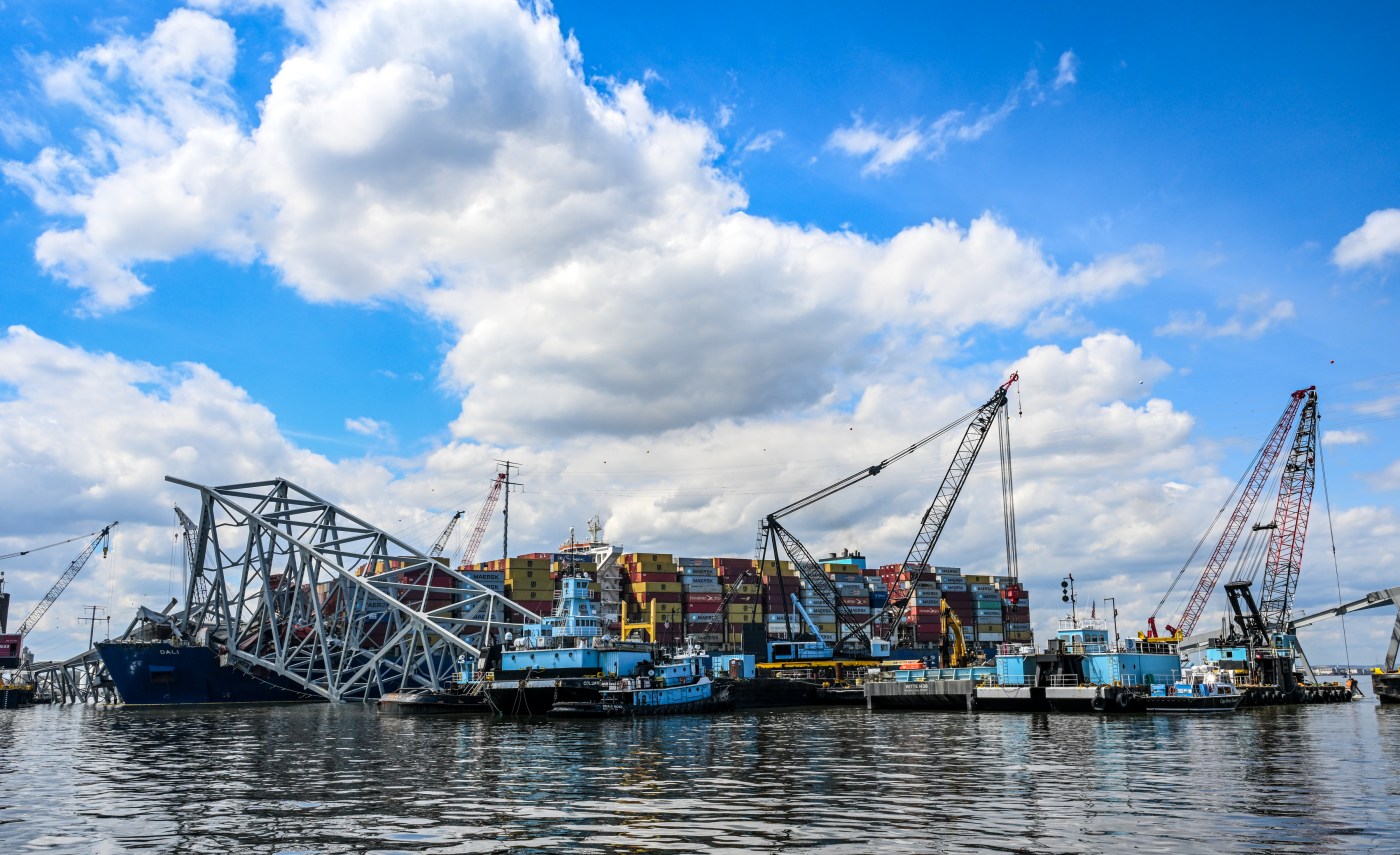
[Baltimore Sun] FBI raid in Key Bridge collapse raises maritime safety questions | STAFF COMMENTARY
It doesn’t take an ancient mariner or even an engineer third class to recognize something is seriously amiss when FBI agents show up at the site of a devastating maritime collision. That’s what happened Monday when federal authorities raided the Dali, the giant container ship that struck and quickly collapsed the Francis Scott Key Bridge last month. The investigators are reportedly focusing on the possibility that the critical loss of power as the Dali was approaching the bridge in the early morning hours of March 26 may have been entirely predictable. What if the crew knew that the electrical systems on board were malfunctioning prior to its departure from a berth at the Helen Delich Bentley Port of Baltimore? Might that constitute a form of criminal negligence, particularly given that six individuals were killed in the incident?
Some have already raised concerns about whether state and federal authorities take precautions to ensure the proper functioning of such vessels, particularly given their size. The 1.6-mile Key Bridge opened in 1977, when commercial vessels were much smaller than the 984-foot-long Dali, perhaps half the size in many instances. Today, the Dali is about average size by modern shipping standards. And Baltimore’s port has had to make infrastructure upgrades to accommodate the behemoths, dredging the Chesapeake Bay shipping channel to a depth of at least 50 feet and creating two berths of similar depth at the port. For years, it has been a point of pride that Baltimore could handle larger vessels as one of only three East Coast ports with that capability.
Yet dredging channels is one thing, making sure that bridge piers would not reduced to rubble by an errant ship is something else entirely. Whether the Maryland Port Authority and federal regulators acted appropriately is likely to be raised when a National Transportation Safety Board investigation is concluded, but that could take months if not years. It’s likely that shipping traffic to and from the port could be returned in a matter of weeks. And while an Interstate 695 bridge over the Patapsco River is no longer in jeopardy (at least not until a replacement is built), there are other bridges vulnerable to errant vessels, including the William Preston Lane Jr. Memorial (Chesapeake Bay) Bridge at Sandy Point and the Chesapeake Bay Bridge-Tunnel in Virginia. Whether container ship captains and crews can be trusted to make sure their vessels are safe and seaworthy no longer seems quite the sure bet it was three weeks ago.
This much is certain. No matter the adverse impact on world trade and the jobs of local port workers, the Key Bridge collapse is proving to be a full employment opportunity for lawyers. In addition to any potential criminal prosecution, multiple civil claims are already on tap. Baltimore Mayor Brandon Scott has weighed in with plans to hire attorneys from Philadelphia and Chicago to go after “wrongdoers” who have caused long-term harm to city residents. And Maryland Attorney General Anthony Brown says he expects to go after “multiple defendants” responsible for the disaster “when the time is right.” Small wonder that the Singapore-based companies that own and manage the Dali are looking to shield themselves — under a maritime law that dates to 1851 — to no more than the value of the Dali and its cargo or perhaps $43.7 million. That would be a small price, indeed, especially if the operators had some hint of electrical problems.
Still, compensating the injured is one thing, making sure a similar disaster doesn’t happen again is another. It is estimated that there are more than 50,000 container ships operating on the high seas. What are the odds that another will lose control at some critical moment? That’s not a question for Baltimore alone. Major ports from Mobile, Alabama, to Long Beach, California, ought to be asking similar questions. While the overall number of serious shipping accidents has been declining in recent years, the potential for greater consequences when they do arise is worrisome. The fall of the Key Bridge ought to serve as a wake-up call: Has the maritime industry gotten complacent or was this a one-in-a-million chance? We deserve a clear-eyed navigation through these troubled waters.
Baltimore Sun editorial writers offer opinions and analysis on news and issues relevant to readers. They operate separately from the newsroom.
